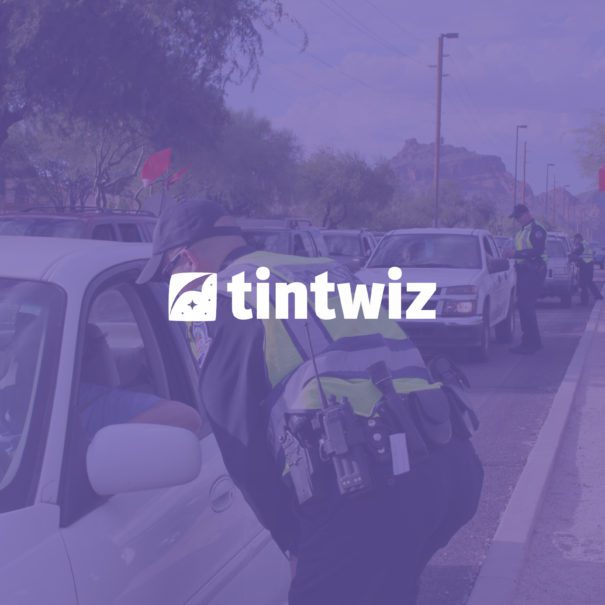Darkest legal tint for Sedans in Wisconsin
- Windshield: Non-reflective window tint is allowed above the manufacturer’s AS-1 line.
- Front Side windows: Must allow more than 50% of light in.
- Back Side windows: Must allow more than 35% of light in.
- Rear window: Must allow more than 35% of light in.
Darkest legal tint for SUV and Vans in Wisconsin
- Windshield: Non-reflective window tint is allowed above the manufacturer’s AS-1 line.
- Front Side windows: Must allow more than 50% of light in.
- Back Side windows: Must allow more than 35% of light in.
- Rear window: Must allow more than 35% of light in.
Please note: The accuracy, completeness, adequacy or currency of the content is not warranted or guaranteed. We are not lawyers or a law firm and we do not provide legal advice. We recommend you consult a lawyer or other appropriate professional if you want legal advice.
Wisconsin car window tint laws were originally passed in the year 1996 and, whiles subject to change, are still largely the same today. However, as myriad new window film products have come out since 1996, it’s a good idea to check in on current Wisconsin window tint laws for vehicles any time you are considering getting window tint for a car, truck, van, or SUV that is currently registered in Wisconsin or if you are transferring the title of a tinted vehicle to a Wisconsin registration.
The most aspect of making sure your car tint is legal in Wisconsin is being sure its tinting’s visible light transmission percent, or VLT, meets the laws for the given window of the vehicle. VLT ratings relate to how light or dark (meaning how see-through or opaque) a window is; the lower the number, the darker and more private the window, so for example a 25% VLT window is darker than a 50% VLT window which is darker than 75% VLT tinting.
Vehicle window tint helps keep the interior of your vehicle cooler and for it rejects the damaging UV light that causes fading and cracking damage on the inside of the car, ruining the looks of the upholstery, the dash, and other surfaces and diminishing the re-sale value of the vehicle.
Car tint is a wise investment that can pay for itself over a few years because of reduced energy consumption by the air conditioning system and of course by preserving the re-sale value thanks to the quality of the interior being preserved.
However as illegal auto window tint in Wisconsin can be an expensive violation, you have to make sure you get legal window tint for your automobile or you risk citation.
Below, we will work through all of the current auto window tinting laws in Wisconsin. To be your car’s window film is allowed under current Wisconsin rules, you must know the visible light transmission rating of the tint on each window.
And note that even clearer effectively transparent window film can still block lots of dangerous UV light and hot IR light; you do not need dark privacy tinting to get many of the benefits of window film.
Windshield Tint Rules in Wisconsin
As is true in almost all states, a narrow strip of tint along the top of the windshield glass is legal in Wisconsin. Cars, trucks, SUVs, and vans may all have non-reflective window tinting applied above the windshield’s AS-1 line, which is marked in small letters/numbers on the glass, or if that line can’t be found, tint is allowed down to five inches below the top of the glass. This strip of window tint can make driving safer by minimizing sun glare in the driver’s eyes, so if there is not tint pre-installed on your vehicle, you should have the tint it applied even if it’s the only tinting on your car.
Auto Window Tint Laws in Wisconsin
In Wisconsin, cars (meaning passenger cars like sedans and coupes) and MPVs (meaning trucks, vans, and SUVs – the acronym is for multi-purpose vehicle) all follow the same window tinting rules, unlike in many states where cars and MPVs have different window tint rules.
Automobiles can have window tint rated at 50% VLT or lighter on the front side windows, which is to say the windows beside the driver and shotgun passenger seat, and can have tinting rated as dark as 35% VLT on rear side windows as well as on the rear windshield.
This window tint on side windows and on the rear window cannot be reflective, which effectively curtails metallic or mirrored tints.
Other Window Tint Rules in Wisconsin
A number of other auto tint rules beyond VLT and reflectivity restrictions apply to car tinting in Wisconsin, so read through the section below carefully.
Window tinting on vehicles in Wisconsin is allowed to have a variance of up to 3%, meaning a car, truck, or SUV with 47% VLT on front side windows or 32% VLT tint on rear windows can usually avoid getting an illegal tint citation and ticket.
Any vehicle that has window tint darker than 60% VLT on the rear window must have both side view mirrors in good working order.
Wisconsin tint law does not specifically prohibit any tint colors, however as noted because of the ban on reflective tint, many colors, like silver, gold, and copper, are effectively prohibited.
Manufacturers, sellers, and installers of window film for cars in Wisconsin do not need to certify the products they sell as meeting state law, and stickers identifying legal window tint are not required in Wisconsin, but do double check that your tint is legal before you have it applied.
Wisconsin window tint laws allow for medical exemptions to the state’s tinting rules, so if you require a darker window tint on the side windows or rear window of your vehicle, talk to a doctor about getting a dispensation that will clear you for a darker window film. Just make sure you maintain documentary proof of the exemption in the vehicle at all times to avoid getting a window tint citations if you are stopped by the police or to prevent a failed vehicle inspection.
Window Tint Violations in Wisconsin
In Wisconsin, an illegal car window tint violation can come with a ticket assessed at up to $175, and police can issue ticket after ticket if they stop you for differing reasons. The state does not have so-called “fix it tickets” that are usually tossed out if you remove the illegal tint and prove you have done so, thus it’s best to make sure you get legal tint the first time and avoid fines.
Police can use compact, handheld devices to test window tint VLT during any traffic stop, so you are always at risk of your illegal tint being found out and cited if you have dark window film on a car, truck, van, or SUV in Wisconsin.
Darkest legal tint for Sedans in Wisconsin
- Windshield: Non-reflective window tint is allowed above the manufacturer’s AS-1 line.
- Front Side windows: Must allow more than 50% of light in.
- Back Side windows: Must allow more than 35% of light in.
- Rear window: Must allow more than 35% of light in.
Darkest legal tint for SUV and Vans in Wisconsin
- Windshield: Non-reflective window tint is allowed above the manufacturer’s AS-1 line.
- Front Side windows: Must allow more than 50% of light in.
- Back Side windows: Must allow more than 35% of light in.
- Rear window: Must allow more than 35% of light in.









